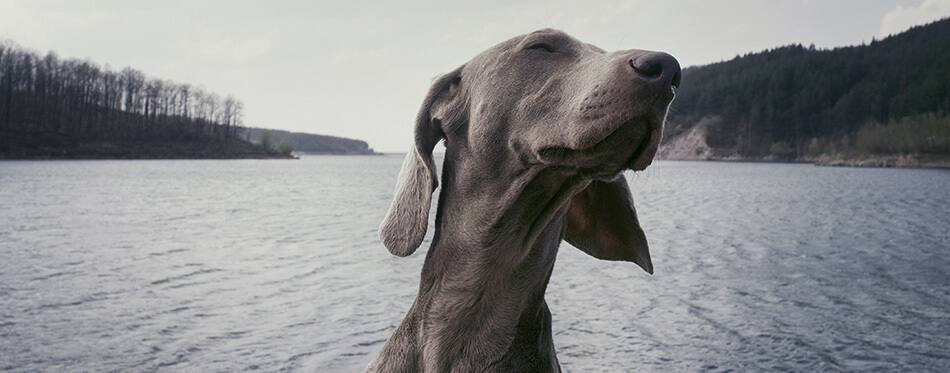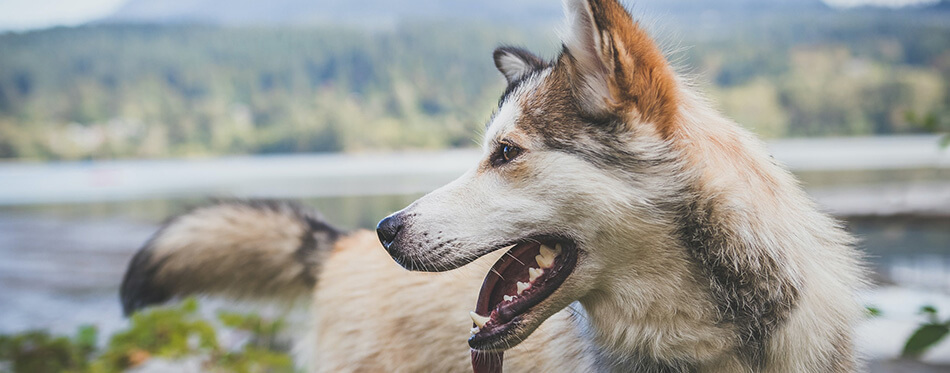Even the most experienced kayaker can struggle, when it comes to heading out in a kayak, with a dog. After all, canoeing or kayaking with dog owners offers a whole different host of additional stress and logistics to consider. However, once you’ve got the basics of kayaking with your dog down, you’ll find that even the most excitable dog can be trained to enjoy life on the water. So, enjoy these safety tips and soon both you and your dog will be floating and paddling through your water adventure like it’s second nature.

How do I Train my Dog to Stay in a Kayak?
As with all things, the best kayak training requires you to start with the basics and move forward from there. It is absolutely essential that you don’t try to jump in at the deep end – quite literally, in this case.
Begin on Dry Land
Before you begin, set your kayak up on solid ground. The first thing you’ll want to train your dog to do is jump into the kayak with you. Pick a command that acts as a cue for your dog to enter the kayak – something simple like “in” or “kayak” will do. Just be sure not to use the command for any other reason, before your dog gets used to the cue and what it means.
Now that your dog jumps into the kayak, it’s important to find them a spot where they can be comfortable. The best way to do this is to sit in the kayak yourself, then use the command to have your favorite furry friend jump in.
Most dogs will find a spot that naturally works well for them – but be sure that you can maintain good visibility and maneuverability when they’ve found their spot. It’s important, once your dog sit is down, that you’re able to work your oars, without the risk of knocking your dog or paddling around them.
Don’t forget that many dogs become excited around movement. And, when it looks like you’re holding a big stick, it can be easy for your furry best friend to think you’re playing a game. So, your next step – whether you’re kayaking or canoeing – is to get your dog used to the movement of the oars, while in the kayak.
You might also find that your dog isn’t comfortable with the movement of yourself, as you’re paddling. Not all dogs love the excitement and some may become stressed. While this can usually be slowly (very slowly!) altered over time, it will take a few tries – so don’t get stressed!
Refresh the Basics
As well as kayak-specific commands and cues, you’ll need to work on your dogs’ basic commands. Since being out on moving, freshwater is very different to sitting on dry land, the changes can be stressful for your dog. So, instead, work on these before you head out to sea (or onto lake water first, ideally).
Your sit, stay, lie down and recall commands should be top priority since an excited dog can easily get carried away and may feel the need to jump into the water. You need to be able to trust your four-legged friend to do as you say and, similarly, your dog should trust you to do what’s best for them. As such, remember to bring along lots of dog treats and a life jacket – an absolute essential!
How to Kayak with a Dog
Once you’ve got the basics down, it’s time to pick the best kayak for you and head out to the water! There are a couple of choices when it comes to choosing the right kayak for your needs:
Inflatable Kayaks
Inflatable kayaks are the most wallet/purse-friendly options. However, they are also the least likely to have a higher weight capacity. They are best suited to calm water, as their lighter frame means they’re more likely to tip, when faced with waves.
As such, they’re not the most dog-friendly kayaks. However, for smaller pets, there is usually more than enough room for your kayaking gear and your dog. Ideally, owners should grab a tandem option, as these will give you enough space for your dog, as well as a drinking bowl (for drinking water – so they don’t try to drink any saltwater!) and room for them to lie down.
Tandem Kayak
Generally, a tandem is preferred by parents, since a small child can comfortably sit alongside their parents but have their own seat. They are very similar to inflatable or single-person kayaks, but come with an extra seat – often making them longer. Which also means they can be a little harder to steer. However, these are also ideal for larger dogs, since owners can give their dogs their own space.
They’re also handy for those with two, smaller dogs if you want to provide them more room to move around and trust them not to jump in the water, without a command from yourself. If you only have one dog, however, it may not be worth the extra money it usually costs to buy this type of kayak.
Sea Kayaks
These are slimmer and have higher sides, as they’re designed to deal with oncoming waves. If you prefer sea trips, longer trips or going out on larger bodies of water, these are ideal for your needs. They are only available as sit-in options, meaning your dog won’t be able to move around easily.
Sea kayaks are created with long-distance in mind, and can usually handle larger weights. However, they’re more difficult to manoeuvre in any water other than the sea. They’re perfect if you’re used to going out on a kayak with your dog – but don’t have the flexibility of the sit on top kayak.
Next, you’ll need to get your dog used to being on the water! Start by putting your chosen kayak half in and half out of the water. Then, use your command to encourage your dog to jump in.
Quick Tips for Kayaking with a Canine Companion
If you’re kayaking with your dog for the first time, it can be easy to get bogged down in the details. Here are a few tips to help you with the absolute basics, so you and your dog can enjoy kayaking without the fuss and stress.
- First thing’s first – safety! Be sure to give your dog a life vest and make sure to wear your own, too.
- Bring along a chew toy, that your dog can munch on. This can help them with their anxiety and even helps to keep them busy if you’ve got a long journey.
- Always be mindful of other paddlers. While you may be happy kayaking with a dog, others may be wary or even fear dogs.
- Older dogs become tired more quickly, be sure to keep an eye on them and stop before your dog becomes tired.
- Always avoid whitewater rivers and stick to calm waters as much as possible
- Even a seasoned kayaker can be caught out when you kayak with your dog. If your dog falls, know how to respond in advance and don’t panic!
- Don’t forget the basic necessities for dog walking, alongside your kayaking trip. You’ll need a food bowl, water bowl and a first aid kit.
- Never keep a leash tied to the kayak or canoe. If it tips, your dog may become tangled or trapped.
- Bring along some water toys for your dog to enjoy when you’re in calmer waters.

FAQs:
Q: Can a dog fit in a single kayak?
A: That depends entirely on the breed of the dog and your own measurements! Remember that most kayaks have a weight limit, so you’ll need to consider the weight limit of the canoes or kayaks. Then add the weight of you and your dog together, and take this away from the weight limit given by the manufacturer. If there’s still some weight left over, then you’ve got the first step down!
Next, you need to consider if there is enough room in the kayak. In this case, kayaking is often easier to consider than canoeing, as they have a large cockpit opening compared to the latter. If you have a large dog, be sure that there’s room around you and your dog, before setting off.
Q: Are sit on top kayaks better for dogs?
A: While the answer to this will always come down to your own preferences and what works best for you and your dog, it’s generally agreed that sit-on-top kayaks (SOT’s) are the best kayaks for dogs. Of course, other kayaks can be just as good. Just as long as there is ample room for both of you and you’re able to keep paddling/steering without the risk of tipping.
Q: Can I pull my dog behind my kayak?
A: If you’ve got a raft that’s suitable for your dog, with an appropriate dog harness, then there’s absolutely no reason why you can’t pull your dog along behind you as you kayak. Just be sure that they’re happy and comfortable as you go!
Q: Will a dog pop an inflatable kayak?
A: The majority of these kayaks are designed to withstand rocks and sharp edges that you might come across when paddling. However, a dog’s claws are still capable of popping an inflatable, due to the pressure exerted.
Q: Is it safe to kayak with a dog?
A: As long as you follow the basics, it can absolutely be safe to kayak with your dog and it’s no big deal to bring a dog along with you on your journeys. Just be sure that both you and your pup are happy traveling this way.
Q: Is canoeing safer than kayaking with a dog?
A: As long as you are both happy and comfortable with your trip, both canoeing and kayaking are equally as safe. However, with canoeing, you have more options. As well as this, because of the higher sides, your dog is less likely to jump out, which means that canoeing with dogs is better for beginners.
That being said, it’s also more difficult for a dog to get back in the raft, if you opt for canoeing, for the same reasons. So, if you want your pup to jump in and out, kayaks are the better choice.

